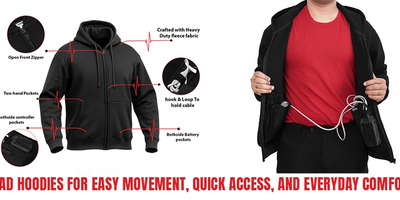
What is the difference between BrioVAD and Heartmate?
BrioVAD and HeartMate are left ventricular Assist Devices (LVADs) that assist the weak heart in pumping blood from the ventricles to the main artery and then the whole body. Both devices improve the circulation of blood. Both of these devices have the functioning of magnetic levitation, but have differences in their size and components. However, the HeartMate 3 device is the only LVAD system that is widely being used today, but the scientific innovations and technology continuously work to improve so that there are fewer chances of complications and failure. One of the examples is the BrioVAD system, which is a new technology and is currently under trial to reduce surgical invasiveness, improve patients’ experience and quality of life, and decrease the risk of infections.
Let’s discuss the difference in BrioVAD and LVAD key features and their advantages so that you will be familiar with the new technology and a beginner’s guide to LVAD, which will help you in making an informed decision in the future.
The Evolution of LVAD Heart Device:
To provide the maximum benefits to the patient and to improve the quality of life of patients with heart failure, an LVAD device, or Left Ventricular Assist Device, has been used. Various models have been made over the past years. The earlier devices were larger and heavier, with significant disadvantages, but the latest HeartMate 3 device has greatly improved the patient’s symptoms without any major risk.
Many LVAD heart devices have been introduced in the past, which may include HeartWare LVAD, HeartMate 2, and HeartMate 3. The HeartWare device has been discontinued due to the associated risks of stroke, and the HeartMate is the latest technology in commercial use now.
The BrioVAD is the latest technology, but currently in an experimental phase and not available for commercial use. But the device is smaller in size, which will allow shorter incisions during surgery and have a flexible driveline, the characteristics that will help to recover early with less chances of risk.
What is BrioVAD?
The BrioVAD system is the newest form of LVAD technology that effectively pumps blood from the ventricles to the aorta (the main artery). The BrioVAD system is specifically designed to reduce the complications and risk after surgery and to increase its versatility to use in different patient populations.
BrioVAD is designed by the experts who understand the delicacy of handling patients with heart failure and the LVAD device benefits and risks. BrioVAD is also suitable for use in a range of patients, including children and adults, because of its compact size. A latest form of mechanical heart pump, BrioVAD, offers both convenience and comfort.
How does it work?
BrioVAD consists of a pump, flexible driveline, controller, and batteries. The pump is small in size and uses a magnetic propeller to pump the blood, which reduces the chances of breakdown of red blood cells inside the blood vessels. It promotes better and faster recovery of the patient after LVAD surgery. BrioVAD has a flexible driveline with a small diameter, which reduces the chances of infection and also reduces the discomfort of the patient. The batteries and controller are user-friendly and can greatly improve the quality of life of patients with this LVAD heart device.
What is HeartMate?
The HeartMate device is something that not only supports the patient waiting for a new heart but also is a last hope for people who are not eligible for a heart transplant. After the HeartWare device, HeartMate was introduced in 2017 and is the only LVAD device in use today. HeartMate has completely replaced HeartWare due to its smaller size and magnetic flow technology. A clinical trial was conducted in 2018 to evaluate the short-term and long-term support of the HeartMate 3 device. The study concluded that 83 percent of patients were still alive and living a good quality of life after two years of LVAD surgery. The device also has high durability, with only 1.8 percent chances of thrombosis, due to which stroke incidence was also reduced significantly.
How does it work?
The HeartMate 3 device is a left ventricular assist device that is implanted in your heart to pump blood and improve circulation in the body. It is a mechanical heart pump for advanced heart failure that compensates for the function of a weak heart. The HeartMate 3 pump has a magnetic system that allows circulation in a pulse mode. The system is connected to the controller and batteries outside the body through a driveline. The controller controls the pump functioning, and batteries are the power source. The HeartMate 3 device is a permanent treatment for people with severe heart failure.
What is the difference between BrioVAD and HeartMate?
BrioVAD and HeartMate are used for the same purpose, but both devices have unique advantages and characteristics. Here are some of the key features in which both BrioVAD and HeartMate have differences:
Size:
BrioVAD is much smaller in size as compared to the previous LVAD devices. It is specifically designed to be used in both the children and adult populations. HeartMate is slightly larger than the BrioVAD, that are mostly suitable for adults.
Design:
Both HeartMate and BrioVAD have a centrifugal pump that works through a magnetic system. But HeartMate devices work in a pulse mode to improve the blood flow and reduce stagnation.
Blood Flow:
HeartMate 3 provides a continuous blood flow in a pulse every 2 seconds to reduce blood stasis. On the other hand, BrioVAD provides continuous blood flow without any pulsatile flow.
Device components:
BrioVAD consists of pump smaller in size and a controller that is electrically connected to the pump. The driveline is flexible, which offers a more comfortable experience. On the other hand, the controller in the HeartMate is more established, and the driveline is not flexible.
Commercial Use:
BrioVAD is still in experimental phase, so it is not available on the market. HeartMate 3 is the only long-term support available and has been used widely all over the world.
Possible Complications:
HeartMate has reduced the risk of stroke but still requires careful management to minimize the chances of infections and bleeding. BrioVAD aims to minimize these risks but is still under study.
What systems would fail without the circulatory system?
The circulatory system is essential to provide oxygen-rich blood, nutrients, and hormones to each organ in the body. The main part of the circulatory system is your heart, which continuously pumps blood to supply nutrients to the whole body. The circulation also eliminates the waste products from the body. So, without the proper circulatory system, each of these functions will be affected.
Without the circulation, the oxygen will be trapped inside the lungs, and carbon dioxide will not get out of the body, which may lead to respiratory failure. The brain cannot function without the proper blood supply, and even after 10 minutes of compromised circulation, brain cells would die and resulting in brain damage. The blood flows through the kidneys to filter waste from the body. Without proper excretion, the harmful waste will accumulate and may cause organ shutdown.
Understanding congestive heart failure is important as it is a life-threatening condition and needs a quick fix. In short, your body system depends on the circulatory system to maintain life. So, a compromised system will need a quick and emergency treatment to prevent irreversible damage.
Clinical Indications:
BrioVAD and HeartMate devices are both LVAD heart devices and work as a mechanical heart pump to effectively supply blood to the whole body. Both of these devices are used either as a bridge to transplant or as a destination therapy, but BrioVAD is still under investigation. HeartMate devices are also used as a bridge to recovery, where your heart needs assistance until it fully recovers.
Device Management:
Devices like LVAD can be managed effectively by using LVAD-specific clothing, which may include LVAD vests, shirts, sleeping belts, and an active pack. Each of these products allows patients to move freely without any restriction and accommodates the external components of LVAD to keep them secure and safe. You should invest in quality products as provided by brands like LVADGear. They design each product according to the patient’s demand and needs, which has improved their life quality significantly. No matter if you are going for a physical activity or just need to secure your device during sleep, they have a range of products for each situation.
Conclusion
BrioVAD and HeartMate are both important devices that help people with weak hearts. HeartMate 3 is already in use and has proven to be effective, while BrioVAD is a newer and smaller device that is still being tested. BrioVAD aims to make surgery easier and help patients recover faster with fewer risks. Both devices offer hope for better health and improved quality of life for those with heart failure. Knowing the differences between these two options will help patients and doctors choose the best treatment according to the individual needs of patients.
Prev post

What Are the Challenges in Designing Artificial Hearts?
Updated on 27 May 2025
Next post

What is a Heart Pump and How Does It Support Failing Hearts
Updated on 15 May 2025








